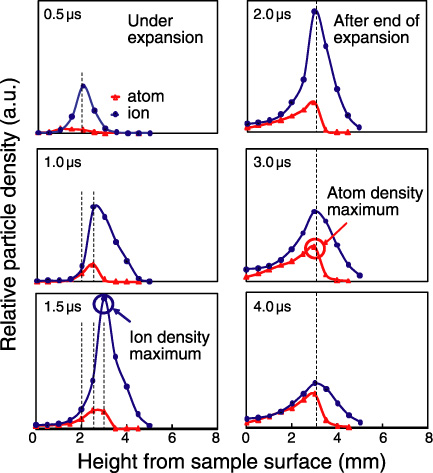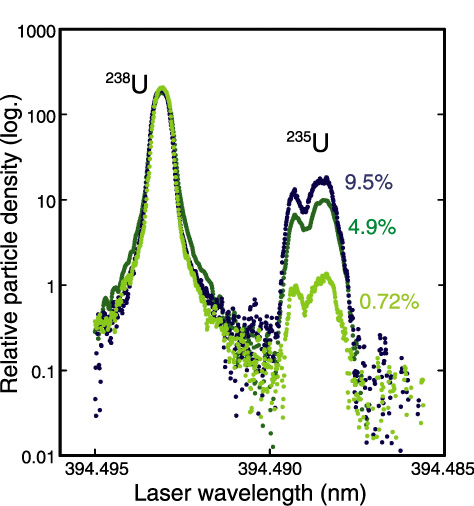
Fig.7-21 Time evolution of plume density distribution

Fig.7-22 Absorption spectra of natural and enriched uranium
Low-decontaminated mixed oxide (MOX) fuels containing minor actinides and fission products are attracting much interest as next-generation fuels, especially from the viewpoint of nuclear security. Isotope analysis of the fuel is indispensable for clarifying the amounts of used fissile materials for the purpose of safeguard verification. However, the high radioactivity of the fuel prevents analysts from treating it by hand, and the strong radiation makes radiometric analysis difficult. Hence, we started to develop a laser spectrometry method for fuel analysis, which does not require any direct sample handling or radiometric measurements.
When a solid sample is irradiated with intense laser pulses, a small part of it is released and decomposed into monatomic species, forming an ablation plume. When another laser beam tuned to the resonance frequency of the species is introduced in the plume, only the species of interest absorbs the laser light. Thus, by scanning the laser frequency across each isotopic resonance, we can determine the isotope ratio from the absorbances.
For the realization of highly sensitive and isotope-selective analysis by avoiding Doppler and Stark effects, it is necessary to decelerate the ablation plume expansion. However, the ablated species populate various energy states and the population distribution varies during the expansion. This complexity makes elucidation of the plume dynamics a very difficult task. Therefore, we developed a precise laser-frequency control system so that we could measure the temporal and spatial variations in the density distribution, as shown in Fig.7-21. The density peaks stop moving at a delay of about 2 μs and at around this time, the densities are maximized because of relaxation from higher energy states. From this result, we determined the experimental conditions needed to obtain a higher sensitivity, as shown by the circles in this figure. Using the conditions indicated in the red circle, we observed the isotope-selective absorption spectra of atomic uranium, as shown in Fig.7-22. These are the first results demonstrating the possibility of isotope analysis for natural uranium without the need to touch the sample. In addition, we confirmed that the 235U peak height varied in proportion with the isotope ratio of 235U with good linearity.
At present we are applying this method to MOX fuel samples for the realization of the remote isotope analysis of plutonium.
The present study was carried out within the project “Development of laser remote analysis for next generation nuclear fuel and applied study by MOX sample” entrusted to the Japan Atomic Energy Agency by the Ministry of Education, Culture, Sports, Science and Technology of Japan (MEXT).